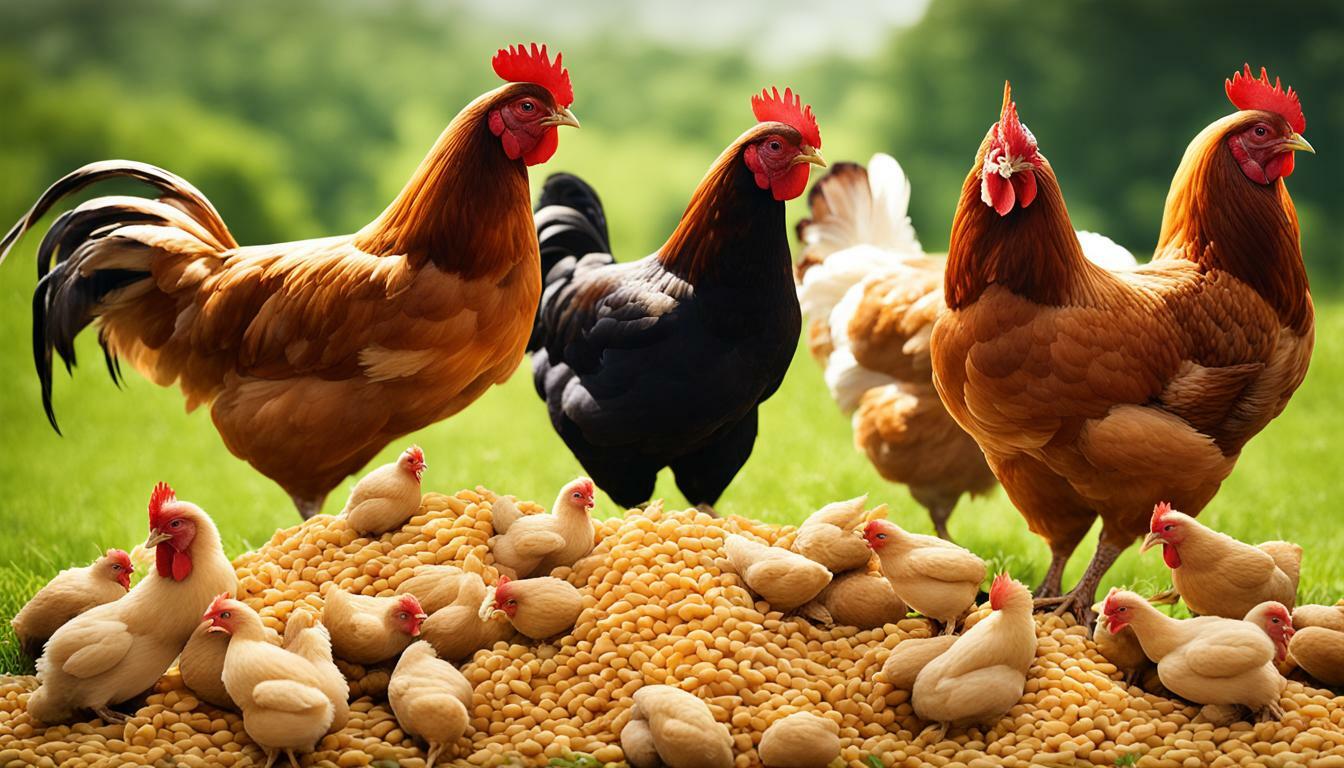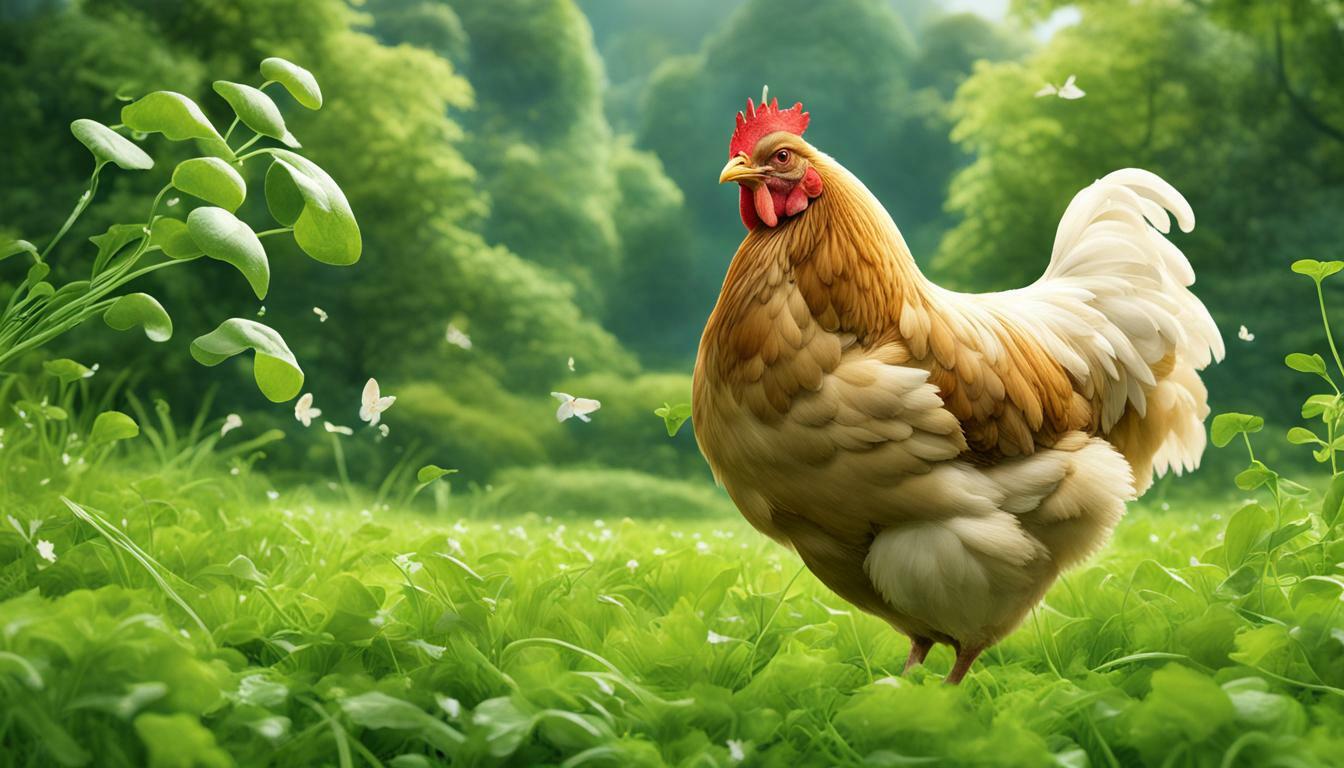Can Chickens Eat Sweet Feed? A Guide to Poultry Nutrition

Table of content:
- What is Sweet Feed?
- Should I Feed My Chickens Sweet Feed?
- How Much Sweet Feed Should Chickens Eat?
- Is Sweet Feed Fattening for Chickens?
- What are the Benefits of Sweet Feed for Chickens?
- What are the Dangers of Feeding Too Much Sweet Feed?
- Can Baby Chicks Eat Sweet Feed?
- When Should You Feed Chickens Sweet Feed?
- Can Too Much Sweet Feed Kill Chickens?
- What to Feed Chickens Instead of Sweet Feed?
- Final Thoughts
Sweet feed is a common part of many backyard chicken keepers’ feeding programs. This textured grain mix is energy dense and often used as an occasional treat or supplement. But with its high carbohydrate content, can too much sweet feed hurt your chickens? Here’s what you need to know.
What is Sweet Feed?
Sweet feed is a textured chicken feed that contains grains like corn, oats, and barley along with things like molasses, soybean meal, vitamins, and minerals. The inclusion of molasses gives sweet feed its signature taste and sweet aroma that chickens love.
Some common brand names for sweet feed are Poultry Conditioner, Flock Raiser, and Sure Chick. While ingredients can vary between brands, a typical sweet feed contains:
- Cracked corn
- Crimped oats
- Wheat middlings
- Dehydrated alfalfa meal
- Soybean meal
- Cane molasses
- Vitamin and mineral premix
The protein content of sweet feed ranges from 16-20%, with carbohydrates making up 50% or more. It’s considered an excellent source of energy for chickens but low in protein compared to most layer rations.
Should I Feed My Chickens Sweet Feed?
Sweet feed can be fed to chickens in moderation. Most chicken-keepers use it as:
- An occasional treat
- A supplement for laying hens
- A transition feed for chicks and pullets
- A method to deliver medication or supplements
However, sweet feed should not make up the bulk of an adult chicken’s diet. Laying hens, in particular, need a complete layer ration to get sufficient protein for egg production.
Sweet feed is often used by backyard chicken keepers who allow their hens to free-range. The high carb content provides quick energy to chickens as they forage for insects and plants.
When fed as directed, sweet feed poses little risk to chicken health. But overfeeding can lead to obesity and other problems in backyard flocks. Moderation is key.
How Much Sweet Feed Should Chickens Eat?
Most chicken feed labels provide feeding recommendations based on the type and age of the birds. For sweet feed, the daily feeding rates are:
- Chicks (0-8 weeks): Free-choice along with a starter feed
- Pullets (8-18 weeks): Up to 1⁄4 lb per bird
- Laying & Broiler Breeder Hens: Up to 1⁄4 lb per bird
Keep in mind that sweet feed should represent no more than 10% of the total diet. The bulk of a chicken’s intake should come from a complete feed formulated for their needs.
Overfeeding sweet feed can lead to obesity, digestive issues, and poor egg production in backyard flocks. It’s best to limit treats to no more than 1-2 tablespoons per chicken 2-3 times per week. Their main diet should be standard layer feed.
Is Sweet Feed Fattening for Chickens?
The high carbohydrate content of sweet feed can lead to weight gain in chickens. Molasses increases palatability, which may cause chickens to eat more than necessary.
Obesity is a common problem in backyard coops where treats are overfed. Overweight hens are prone to issues like:
- Fatty liver hemorrhagic syndrome
- Egg laying problems
- Prolapse
- Reduced heat tolerance
Obese meat birds like Cornish cross chickens have a high risk of leg problems and sudden death.
To keep your flock healthy, limit sweet feed to 1-2 times per week as a treat. Don’t allow boredom to lead to overeating behaviors. Keep chickens active and supplement their main diet with leafy greens, sprouted grains, garden waste, and other low-calorie foods.
What are the Benefits of Sweet Feed for Chickens?
When fed in moderation, sweet feed offers a few benefits:
Energy: The high carb content provides quick energy to active free-range hens. Molasses gives an immediate blood sugar boost.
Palatability: Chickens love the taste! Using sweet feed can encourage picky eaters and reward chickens as a treat.
Weight Gain: The extra calories help boost growth rates in meat chickens. Cornish cross broilers reach target market weights quicker when fed sweet feed.
Convenience: Sweet feed is affordable and available at most feed stores. The crumble texture works for chickens of all ages.
Boredom Buster: Providing sweet feed as a treat alleviates boredom in confined chickens while also encouraging foraging behaviors.
Just be careful not to overdo it. The benefits of sweet feed are best achieved when limited to 10% or less of the total diet.
What are the Dangers of Feeding Too Much Sweet Feed?
While sweet feed makes a great occasional treat, overfeeding it can cause several health problems:
Obesity: The high carb and sugar content leads to rapid weight gain and fat deposits, especially around chickens’ abdomen and liver.
Fatty Liver Disease: Excess fat accumulation in the liver can cause it to rupture and bleed, which is often fatal.
Crop Impaction: Too much sticky, starchy feed can clog up a chicken’s crop and cause sour crop.
Biofilm Production: The glucose and starch in sweet feed promotes harmful bacterial overgrowth and biofilm production in chickens’ digestive tract.
Diarrhea: Quick swings in blood sugar and excess carbs can cause loose stool, diarrhea, and pasty vent.
Nutritional Deficiencies: Chickens filled up on low-protein sweet feed often don’t get enough protein, calcium, or phosphorus needed for good health and egg laying.
Egg Laying Issues: Obese hens are prone to egg laying problems like soft shells, double yolks, reduced production, and egg binding or prolapse.
Lameness: Rapid weight gain in meat birds causes excess strain on the legs which can lead to lameness.
Reduced Immunity: Excess sugar consumption leads to inflammation and oxidative damage which impairs chickens’ immune systems.
Chicken health suffers greatly when sweet feed makes up the bulk of their diet. Use it sparingly and continue offering a balanced ration tailor-made for laying hens or meat birds.
Can Baby Chicks Eat Sweet Feed?
Sweet feed can be introduced to chicks around 2-3 weeks of age. The soft crumble texture and sweet taste are readily eaten by young birds. Sweet feed stimulates early growth of chicks.
However, chicks should not subsist on sweet feed alone. Keep offering starter or chick feed simultaneously to provide essential amino acids and nutrients crucial for development. Limit sweet feed to just a small amount – a few pieces mixed into their regular feed each day.
By 8 weeks old, pullets can eat up to 1⁄4 pound of sweet feed daily as a supplement. Always ensure the bulk of their diet consists of a complete chick or pullet starter feed.
Never offer sweet feed instead of a properly formulated starter ration. Chicks also need access to insoluble grit to process grains properly.
When Should You Feed Chickens Sweet Feed?
Here are some guidelines on when sweet feed can be fed:
- As a supplemental treat 1-2 times per week – 1-2 tablespoons per hen
- During the transition from starter to grower feed (8-12 weeks old)
- During the transition from grower to layer feed (16-18 weeks old)
- To encourage foraging in free-range hens
- To help deliver probiotics, vitamins, oyster shell, or medications
- To stimulate chick appetites at 2-3 weeks old
- As extra calories during cold weather
Avoid feeding sweet feed every day or ad libitum. Treat it like candy – a special snack for chickens, not the whole diet.
Monitor your flock’s body condition and egg laying ability. Reduce sweet feed amounts if you notice obesity, loose stool, or other health issues.
Can Too Much Sweet Feed Kill Chickens?
While not acutely toxic, long term overfeeding of sweet feed can have fatal consequences in backyard chickens. Here’s how:
Fatty Liver Hemorrhagic Syndrome: Also called FLHS, this condition causes massive hemorrhage and necrosis of the liver. It has a high mortality rate in hens.
Digestive Blockages: Crop impactions and gizzard/intestinal blockages can occur and result in death if untreated.
Bacterial Infections: Excess glucose and starch allows pathogenic bacteria like E. coli and Salmonella to proliferate, resulting in sepsis.
Heart Failure: Obesity places excess strain on the heart. Sudden death by cardiac arrest is common in obese meat chickens.
Egg Binding: Obesity and nutritional deficiencies make hens prone to egg binding and prolapse which can be fatal.
Immune Suppression: Excess sugar intake impairs immunity and increases the risk of succumbing to infectious disease.
Leg Issues: Rapid growth in meat birds can cause twisted legs, slipped tendons, and fractured bones leading to paralysis, starvation, and death.
Ensuring chickens maintain a healthy diet and weight is crucial. Routinely monitor sweet feed intake and avoid overfeeding.
What to Feed Chickens Instead of Sweet Feed?
There are many alternatives to provide supplemental nutrition rather than sweet feed:
- Layer feed or flock raiser
- Dried beet pulp
- Prebiotics
- Brewer’s yeast
- Black oil sunflower seeds
- Dried mealworms
- Scratch grains
- Cracked corn
- Oats
- Fresh fruits and veggies
- Sprouted grains
- Garden waste like weeds, grass, bugs
Vary treats given to alleviate boredom. Foods like sunflower seeds or critter crumbles offer protein and fat instead of excess carbohydrates. Dried seaweed and herbal blends also make nutritious boredom breakers.
Providing opportunities to forage reduces overeating behaviors. Allow access to fresh greens, garden waste, sprouted grains from the kitchen, hanging greens, and outdoor runs to scratch through. This keeps chickens active and engaged.
Final Thoughts
While sweet feed makes a tasty treat for backyard chickens, it does not provide balanced long term nutrition. Limit sweet feed to occasional supplemental feeding for chicks, pullets, and laying hens. Avoid overfeeding it, as obesity and other health problems may result. Employ other nutritional strategies to reduce boredom and keep your flock fit and active. With some restraint, sweet feed can safely be part of a varied feeding program for chickens.
Welcome. I’m Adreena Shanum, the proud owner of this website, and I am incredibly passionate about animals, especially poultry. I founded adreenapets.com as a labor of love, stemming from my desire to share my knowledge and experiences with poultry enthusiasts worldwide.




